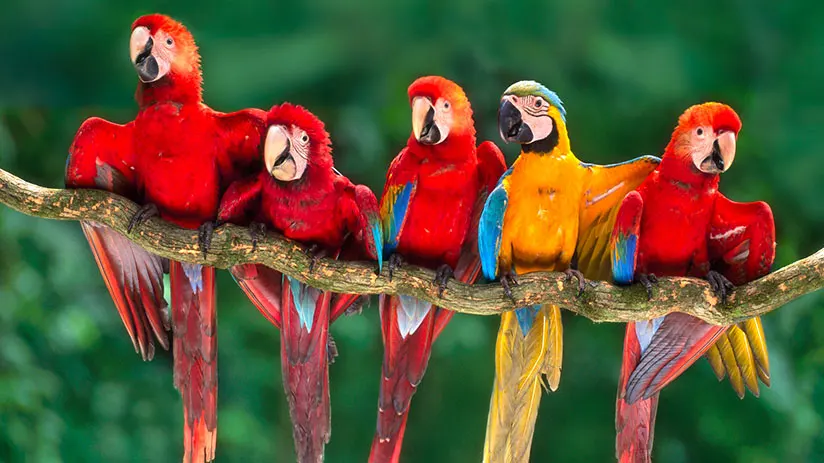The Tambopata National Reserve is a preserved area of 247,690 Amazon hectares in southeast Peru. It has tropical weather between 17 and 39 degrees Celsius and an altitude of 218 m.a.s.l. It has over 1,200 plant types and around 2,360 animal species, most of which are endemic.
For all these characteristics, a trip to this paradise would be much more than a pleasant and impressive vacation. Together with the Machu Travel Peru team, we have prepared this article. We would love to be your accomplice in this unparalleled adventure. Learn about everything you can experience in this remote corner of the world.
Everything you need to know about the Tambopata National Reserve
- Tambopata National Reserve
- Tambopata history
- Biodiversity in Tambopata
- Who lives in Tambopata
- What to visit in Tambopata National Reserve
- The best time to visit Tambopata
- How to get to the National Reserve
- What to wear to my Jungle trip
- Other useful tips
Tambopata National Reserve
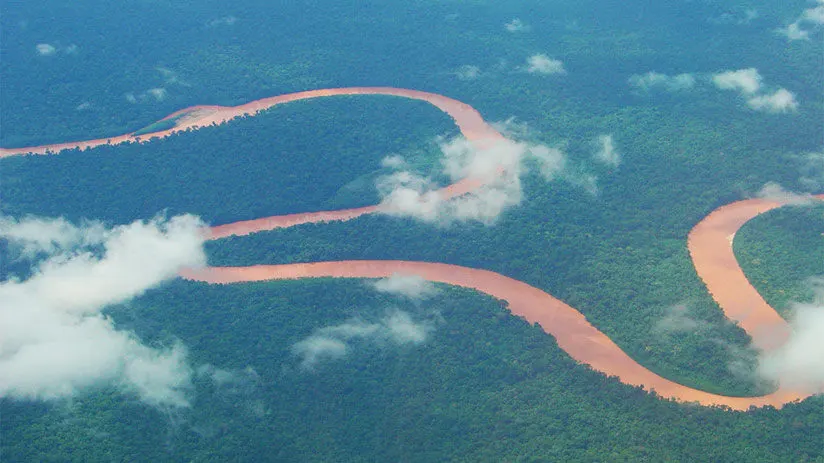
The Tambopata National Reserve is in southeast Peru and covers 2,748 square kilometers of virgin Amazon. Peru state has preserved more than 230 species of plants and 160 mammal species. Unlike the Manu National Park, the Tambopata National Reserve receives more tourists because it is more adapted to ecotourism.
Tambopata receives its name from the main river that crosses it, a Quechua word (Tambo means to deposit, and Pata means high place). This driver was born in the Peruvian Altiplano (Titicaca Lake border to Bolivia) and empties into the low jungle inside the Peruvian department of Madre de Dios.
Like other Nature Reserves in Peru, Tambopata has incredible biodiversity in flora and fauna. It is also a refuge for endangered species and other specimens of exotic wildlife. Not to mention, it’s home to indigenous communities that promote convivial tourism. It is one of the most visited areas in the Peruvian south jungle, offering a unique experience within the Amazon.
Location
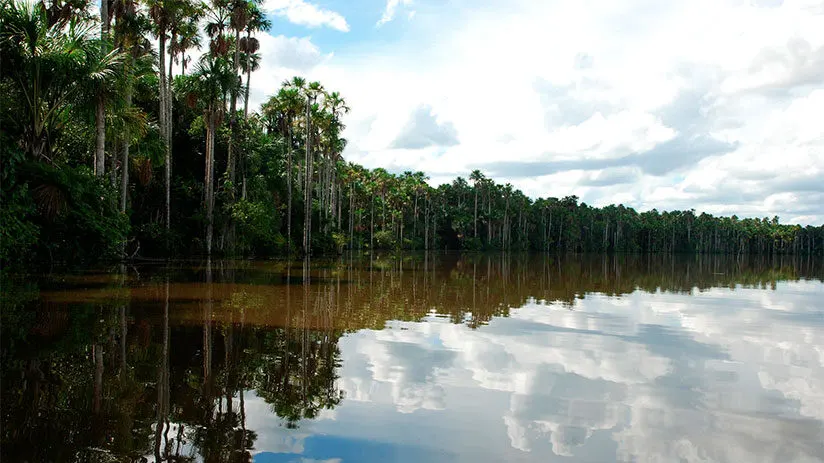
The National Reserve of Tambopata is located in the southeast region of Peru, in the province of the same name, inside the Madre de Dios Amazonian department. It has more than 2,746 square kilometers of preserved extension with an altitude of around 200 – 400 m.a.s.l. in the Peruvian lowland jungle.
Therefore, it stretches for miles around the Amazon and connects Cusco, Puno, and Manu National Park and the border with Brazil; thus, you will witness a vast and impressive landscape of wildlife, ancient trees, and rivers.
Tambopata history
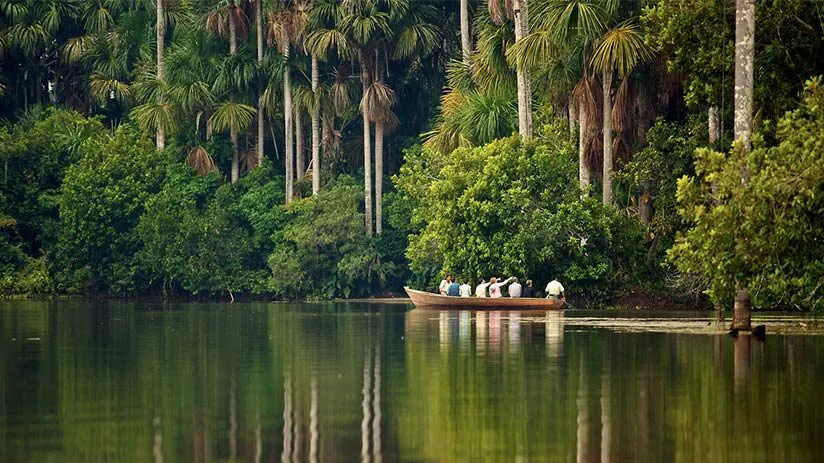
The National Reserve was created on September 4, 2000, through a Government resolution. It was the result of the efforts of a group of conservationists and biologists who presented many investigations about the site since 1999 as proof to consider Tambopata a National Reserve and not only a simple Natural Reserve since, with this old denomination, informal mining, and indiscriminate logging still had a free pass for exploitation in the area.
It is worth noting that before 2000, the Tambopata was considered part of a larger Reserve Zone called Tambopata-Candamo. The “Reserve Zone” denomination didn’t have enough protection from the government as a “National Reserve” zone has (according to the Peruvian government stipulation).
The concern about changing the denomination to “National Reserve” was based on Tambopata, one of the region’s last areas of virgin tropical forest. Besides, its lowland and foothill rain forests were the only ones connected with cloud forests at higher elevations and moist savannahs, a unique characteristic of the entire South American Amazon.
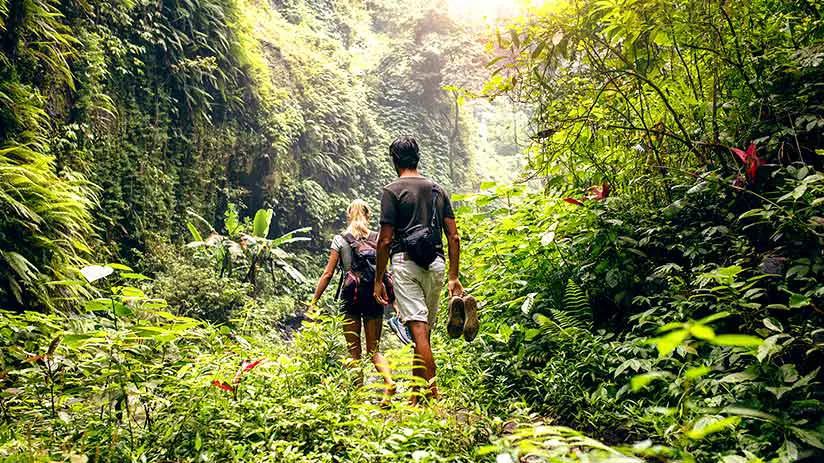
The zone also had a healthy animal population, including felines, jaguars, tapirs, harpy eagles, giant otters, and macaws. Many of these species had disappeared from other parts of the Amazon in Peru and South America. The area also had a small human population, which meant less environmental impact.
Another critical issue in creating the “National Reserve” was the demand for tourists to visit Manu National Park nearby. The number of visitors increased yearly, threatening the reserved and restricted areas in Manu. In this sense, Tambopata could serve as a vent zone and a second visit option for the high tourist flow of Manu.
The National Reserve could also act as a pass-zone. This would help people reach the jungles of Bolivia and Bahuaja-Sonene National Park and reduce human impact in that area of the Peruvian Amazon. In this form, creating the Tambopata National Reserve was a great success for the Peruvian future.
Biodiversity in Tambopata
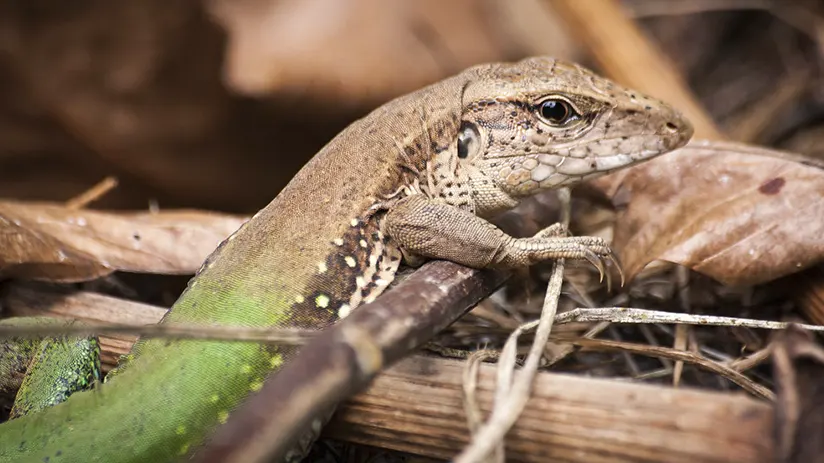
The National Reserve has one of the richest biodiversities in the Amazon. It is home to over 1,200 types of plants, 100 species of reptiles and amphibians, 160 types of mammals, 179 fish species, 630 kinds of birds, and 1,200 types of butterflies. These are approximations because more and more species are discovered each year, and some are even endemic.
Therefore, Tambopata is one of the earth’s most well-preserved and biodiverse areas. It contains hundreds of species of plants, mammals, insects, reptiles, amphibians, butterflies, and birds. Different types of trees and oxbow lakes (a U-shaped lake, which creates a freestanding body of water); even monkeys, caimans, and much more. This is indisputably one of the highlights when you travel to Tambopata.
Who lives in Tambopata?
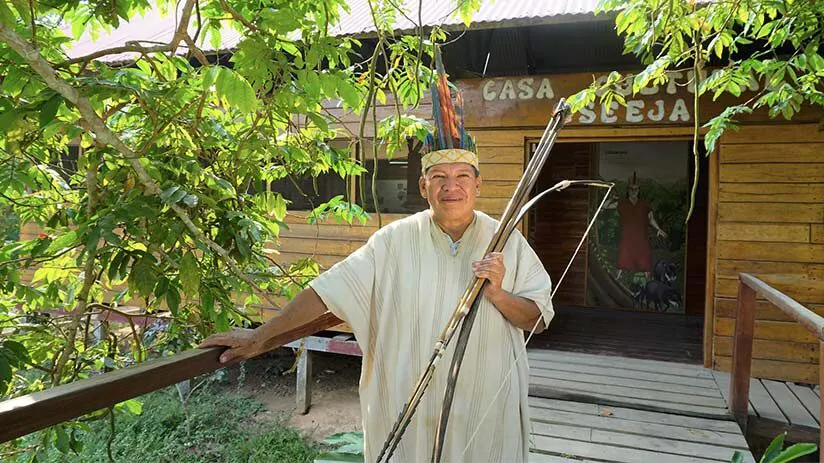
The native tribe called “Ese Eja” means “people”. They have lived for centuries near the National Reserve. Approximately 200 families live in Infierno town, around 20 families live in the Sonene zone, and 50 live in Palma Real town.
They are farmers, fishermen, and hunters by tradition. However, in recent years, tourism and nut harvesting in Brazil have become their primary sources of income. Its costumes and traditions are part of any visitor’s experience during the Tambopata experience in Peru. What is the next part?
What to visit in Tambopata National Reserve?
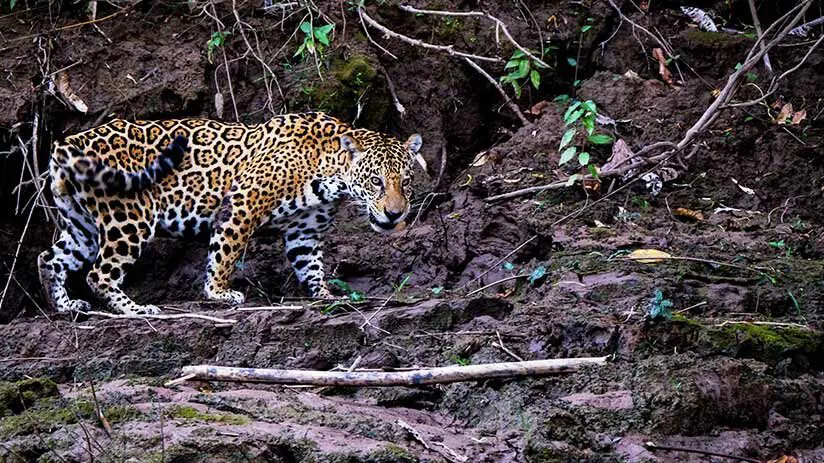
The Amazonian rivers and oxbow lakes (a U-shaped lake that creates a freestanding body of water) provide ideal habitats for many wildlife species. Some can be seen on river cruises, such as the pink river dolphin, jungle predators to see on Amazon, the giant River Otter, the yellow-headed river turtle, and the South American river turtle.
Also, on its river and lake banks, you will see macaws and parrots feeding on trees. Besides capybaras and caimans. Four of the six caiman species live in Tambopata. However, visitors usually see only two types: the spectacled caiman and the tremendous black caiman. Quite a sight to behold!
1. Amazon river cruise
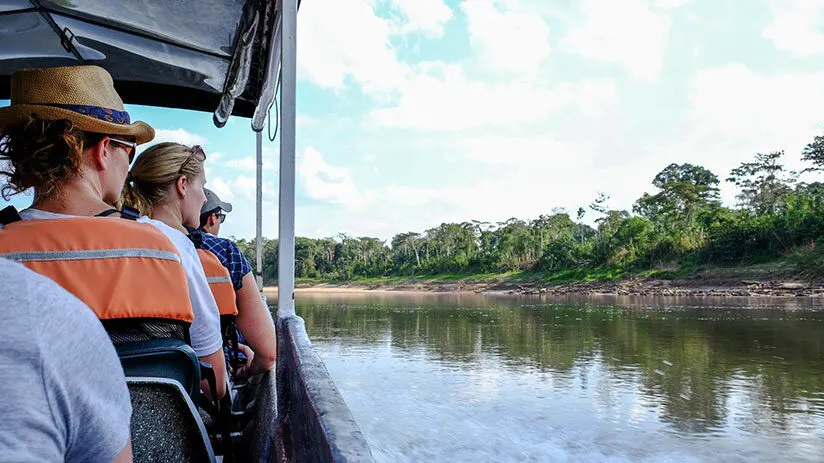
The Jungle day walks are an exciting way to experience first-hand the home of endless species of wildlife, plants, and trees. You will see and learn about the different habitats, ecosystems, and how the rainforest works. For this reason, expect to see birds, parrots, monkeys, insects, beautiful orchids, and wonderful medicinal plants. You might also see the distinctive tracks left by jaguars, tapirs, or other nocturnal animals.
Jungle night walks are also a fascinating and mind-blowing way to explore one of the most famous Nature Reserves worldwide. The night is the best time to see the jungle’s wildlife. Most species are only active after dark. When the sun goes down, you can see bizarre insects, colonies of leaf-cutter ants, colored frogs, snakes, caimans, and even monkeys, and if you have good luck, even a tapir.
2. Jungle day and night treks
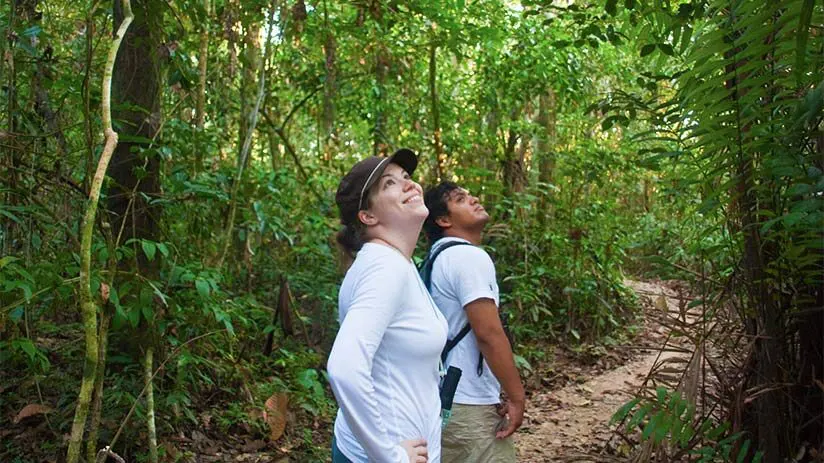
The Jungle Day walks are an exciting way to experience first-hand the home of endless species of wildlife, plants, and trees. You will see and learn about the different habitats, ecosystems, and how the rainforest works. For this reason, expect to see birds, parrots, monkeys, insects, beautiful orchids, and wonderful medicinal plants. You might also see the distinctive tracks left by jaguars, tapirs, or other nocturnal animals.
Jungle night walks are also a fascinating and mind-blowing way to explore one of the most famous Nature Reserves worldwide. The night is the best time to see the jungle’s wildlife. Most species are only active after dark. When the sun goes down, you can see bizarre insects, colonies of leaf-cutter ants, colored frogs, snakes, caimans, and, if you have good luck, even a tapir.
3. Clay licks
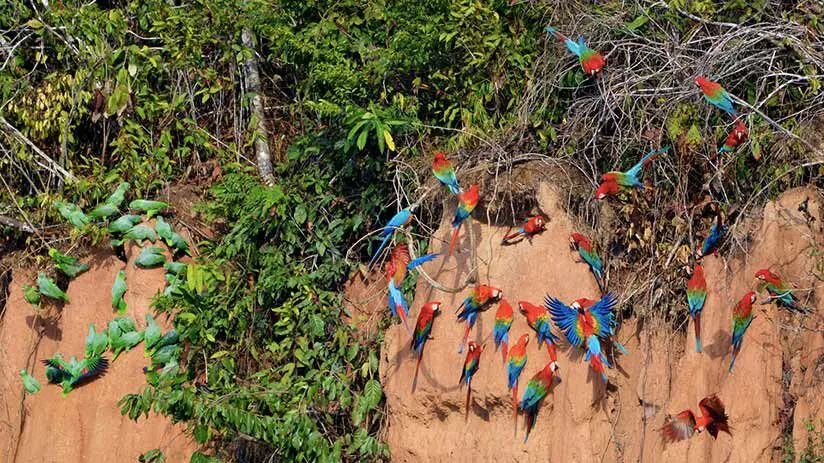
The National Reserve of Tambopata is world-famous because it has the highest concentration of brilliantly colored parrots and macaws worldwide. The birds gather daily for feedings over naturally forming clay walls on the river’s banks. They feed on clay to counteract the toxins from the fruits they previously ingested.
This scene offers a fantastic wildlife view while hundreds of parrots fly everywhere. Without a doubt, it is a must during your visit to the National Reserve.
4. Canopy walks
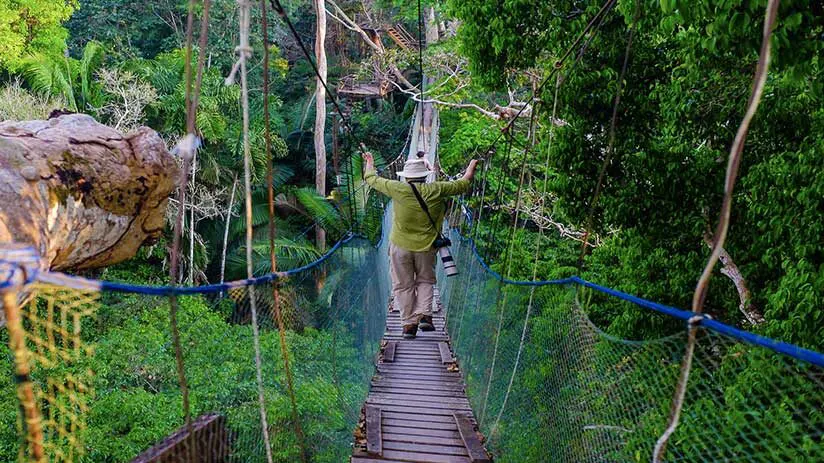
As Mowgli in the Jungle Book, much of the Amazonian jungle life occurs at the treetops. It gives you an extraordinary chance to see the hidden beauty of the Amazon.
The canopy is a rope bridge located at a height of over 25 meters and extends many meters through treetops, connecting. Once you walk from one treetop to another, you will witness the stunning habitat of many animals and different kinds of exotic birds in Tambopata, such as toucans, macaws, harpy eagles, and even monkeys. It will be a spectacle of sounds and colors. Also, you will marvel at the perfect and captivating rainforest views.
5. Sandoval lake
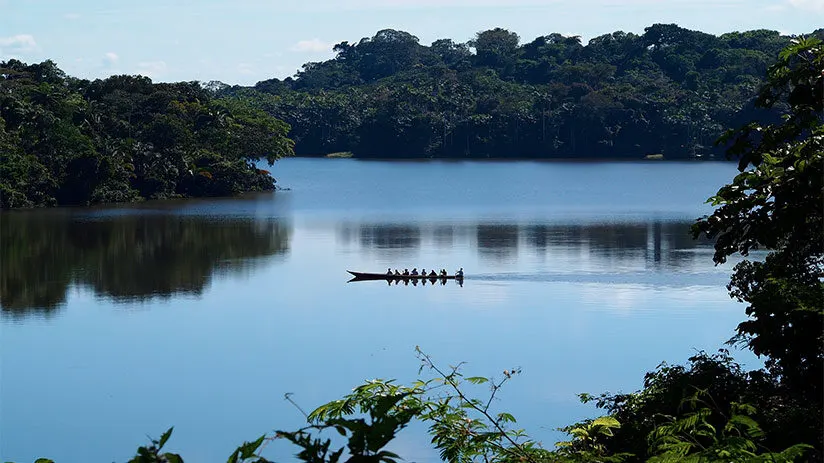
Sandoval is a beautiful lake located within the National Reserve, which extends over about 120 hectares of land. It is renowned for being home to a large number of wildlife, including a massive population of macaws, kingfishers, alligators, otters, and herons.
This part of the reserve has become very popular and is in demand by visitors (due to its proximity to the modern jungle city Puerto Maldonado). Because of this, you can opt for boat tours around the lake and spot the myriad wildlife, which is a perfect opportunity.
6. Lagoons of Cocococha and Sachavacayoc
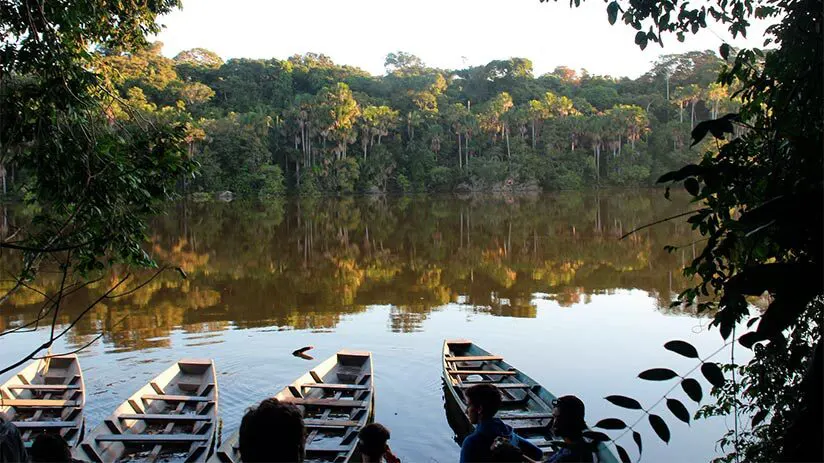
These enchanting bodies of water are located across the Tambopata River basin. Both lakes are the refuge and home to various Amazon rainforest animals.
The Sachavacayoc lagoon is usually the most popular site due to its different nature and the realization of different campsites around it. If you want a much more intimate experience with the Peruvian Amazon, these lagoons are the perfect place.
You will also find clay licks in both lagoons. These are places where macaws and other local animals come to eat. Make sure you know the Chuncho and Colorado clay licks, both located on the banks of the river.
7. Know the native communities
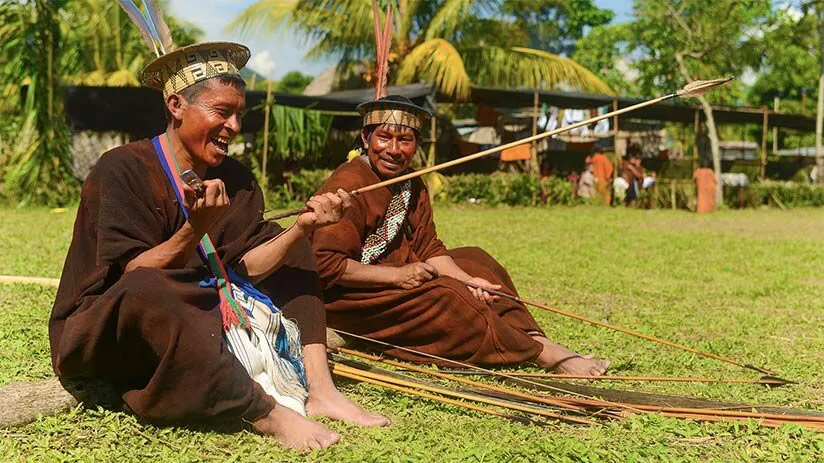
Another great option to enjoy within Tambopata is to get to know the different Indigenous communities. Many tours allow the sharing of their costumes and traditions. The Esa Axis, Harakbut, and Matsigenka native tribes are the most popular.
Many of these do not share actual ties and connections with the outside world unless you are a tourist who wants to know about their customs with humility and awareness. But don’t worry. They learned to share and be kind to visitors, and now they always look forward to your arrival.
The best time to visit Tambopata
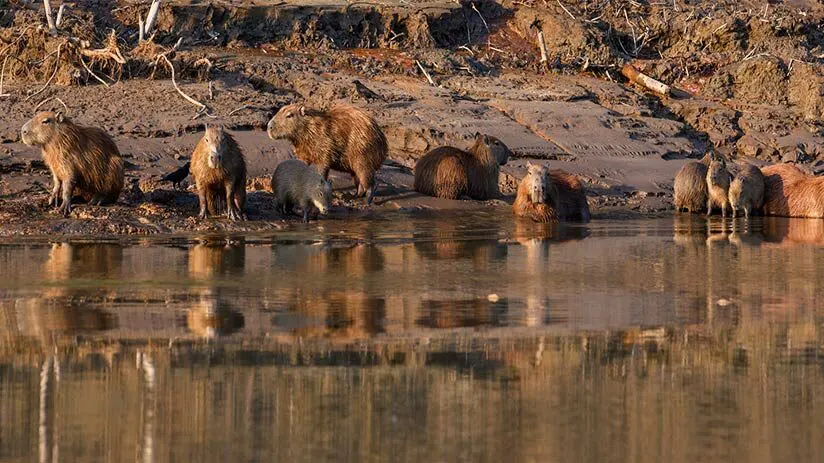
The Tambopata National Reserve is slightly seasonal, with its tropical temperature around 17 – 39 degrees Celsius (45ºF – 103ºF). It has humid and hot weather for most of the year. Also, it has two well-defined seasons: the rainy season (from January to February) and the dry season (from May to October). So, traveling to Tambopata will be a matter of the traveler’s preference.
- During the wet or rainy season, which starts in November and goes on into April (January and February are the rainiest months), you will get a great chance to find and see specific wildlife of this season. The temperature will be more relaxed, but there will be many mosquitoes, so take precautions.
- Also, due to flooding, most of the jungle trails will be covered in mud, affecting your exploring activities. However, the advantage of traveling to Tambopata during this season is that you will quickly see amphibians or reptiles like caimans, giant otters, and pink dolphins. Due to the high water level caused by rain, lagoons and lakes will also form throughout the forest.
- The dry season, which runs from May to October, offers better trail conditions for exploring the area on foot. The pros of traveling to Tambopata this season are that you can see many macaws and parrots on the clay licks because they are nesting and, therefore, more active. As you can see, this is an excellent opportunity to see colorful birds, chicks, and nests!
How to get to the National Reserve
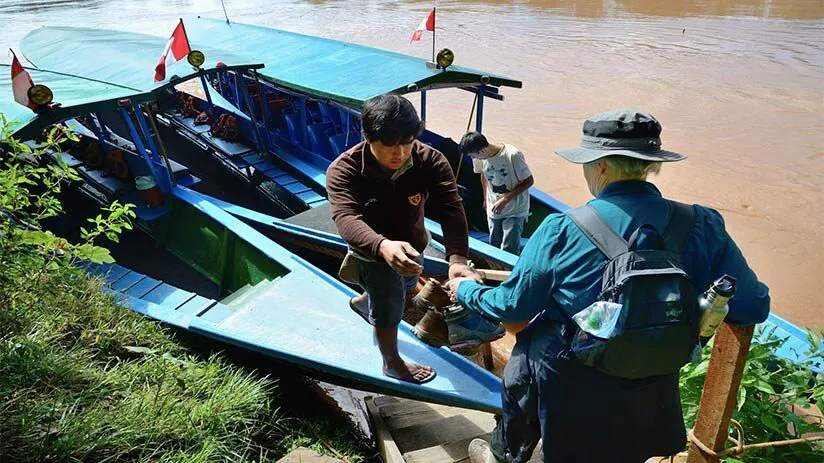
There are generally three steps to getting to Tambopata National Reserve: first, by plane; second, by bus; and third, by boat. Regardless of the form, you will always depart from Lima or Cusco. Of course, Puerto Maldonado City is an obligatory pass-point during any of these ways. Therefore, getting to this jungle city is necessary first to reach Tambopata.
1. By plane
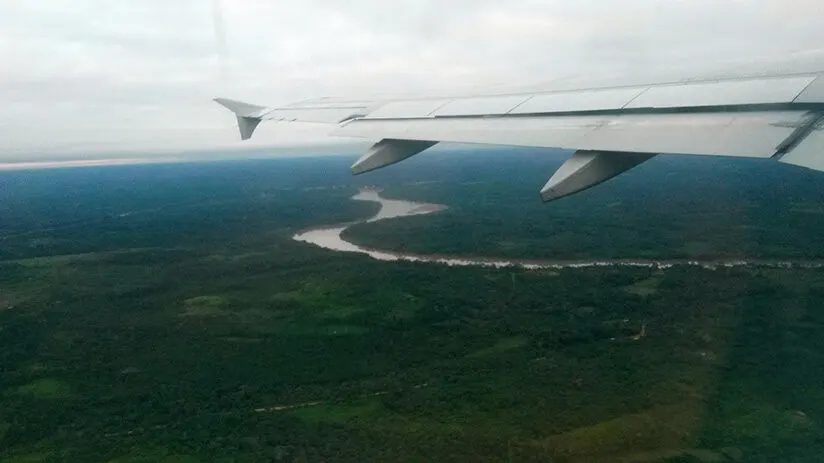
If you want to get to the reserve from Lima or Cusco, you will first have to take a plane. There are daily nonstop flights from Lima to Puerto Maldonado, this service takes approximately 1h 40 min. In addition, there are also direct flights from Cusco that take approximately 55 min. From Puerto Maldonado, you can start your journey to the leading luxury hostels in the same city and spend a night there.
2. By bus
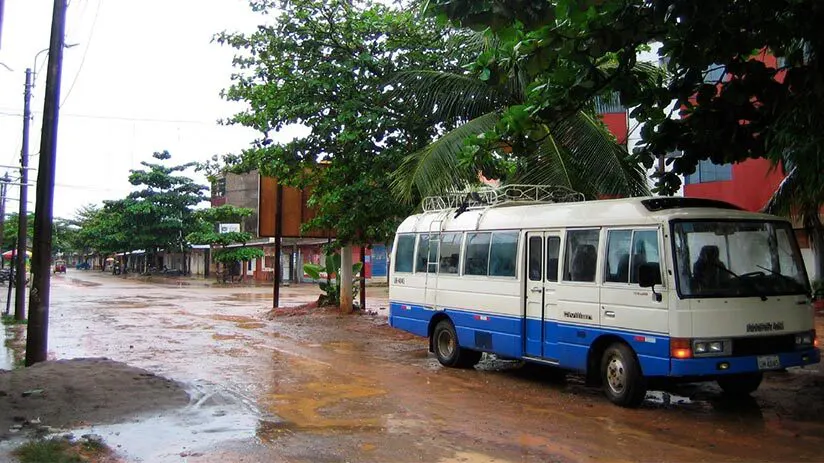
If you are taking any Amazon tours from Cusco, you can get to Puerto Maldonado: take the bus. This trip lasts 06 hours approx. and the buses have daily routes to the jungle city from the Andean city.
This is the best way to enjoy breathtaking landscapes and panoramic views of the Amazon on the way. There are almost two bus frequencies from Lima, and the bus trip lasts more than 24 horas, making a scale in Cusco.
Regardless of the route taken to reach Puerto Maldonado. Once you arrive, the travel agencies will pick you up from the airport or bus terminal and take you to their offices to receive a briefing for your Amazon tours. Next, you will be taken to the city’s main port to take the travel agencies’ boats heading to one of the Amazon lodges in Tambopata, distributed along the Tambopata basin.
3. By boat
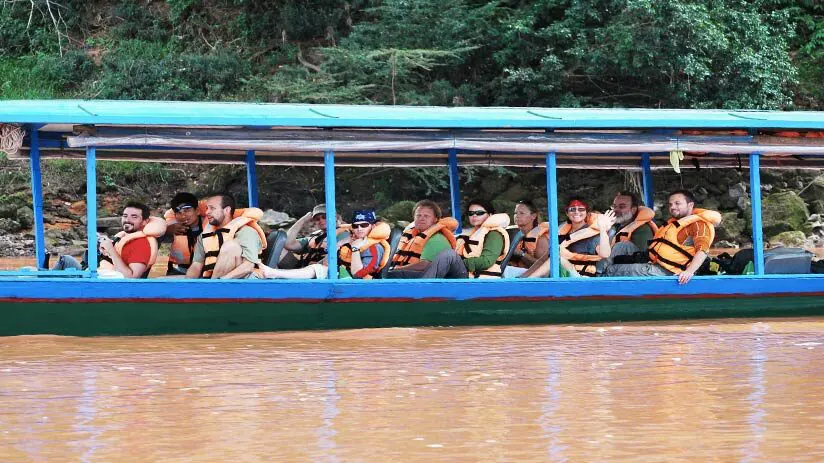
Once in port, you must take the boats to travel to different travel agency lodges located throughout the Tambopata river banks. Don’t worry; several comfortable motorized canoes will leave you in your lodging of choice.
Most Tambopata lodges are a few hours by boat from the city’s port. Boat schedules are designed to be available upon arrival on different flights. Several security measures guarantee your protection, also boat trips are great, and one of the favorite activities of many travelers.
What to wear to my jungle trip
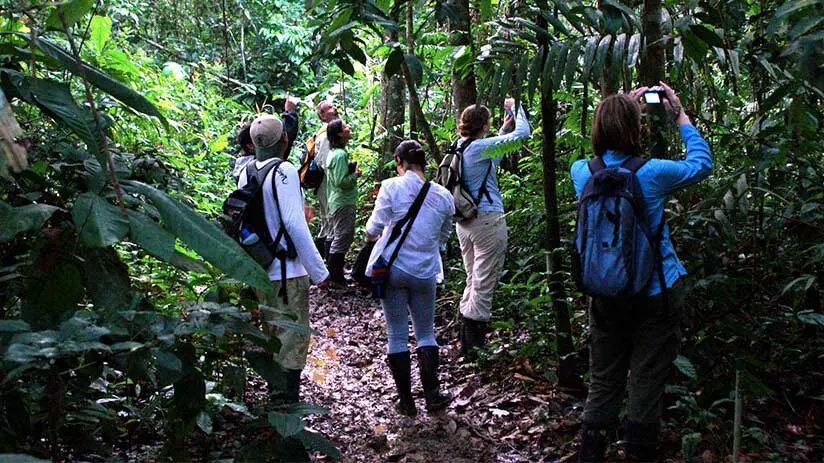
Usually, the most common clothes and things to carry with you during your jungle trip are the following.
- Sunblock
- Small daypack
- Light t-shirts
- Binoculars
- Slippers or sandals for walking around the lodges
- Camera gear
- Repellent
- Broad-brimmed chapeau
- Tight-weave, light-colored, long cotton pants
- Flashlight (headlamp) with batteries
- Sunglasses
- Rain suit or wrap
- Small-denotation bills (Dollars or Soles)
- Mud walking boots
- Trekking boots
- Thin stockings
Other useful tips
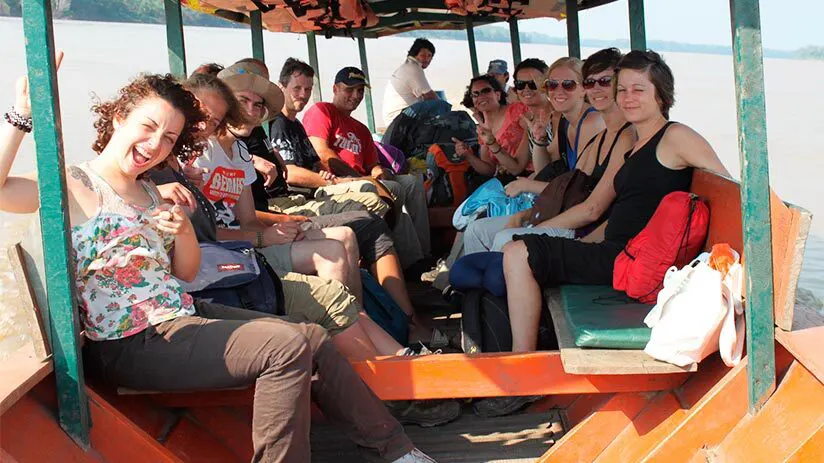
To enjoy traveling to Tambopata, it is necessary to take a few things into account.
- It is highly recommended that you obtain suitable travel insurance coverage before starting any of the different tours of the Amazon. The risk of becoming infected with a tropical disease, like malaria, an endemic disease of the Amazon, is higher than in other parts of the world.
- Vaccinating against yellow fever is essential. Your local doctor can take care of that. Inform him about your Amazon trip and when it will be realized.
- Remember that to enter the Tambopata National Reserve, it is necessary and mandatory (by Peruvian government law) to go with an official and qualified tourism agency.
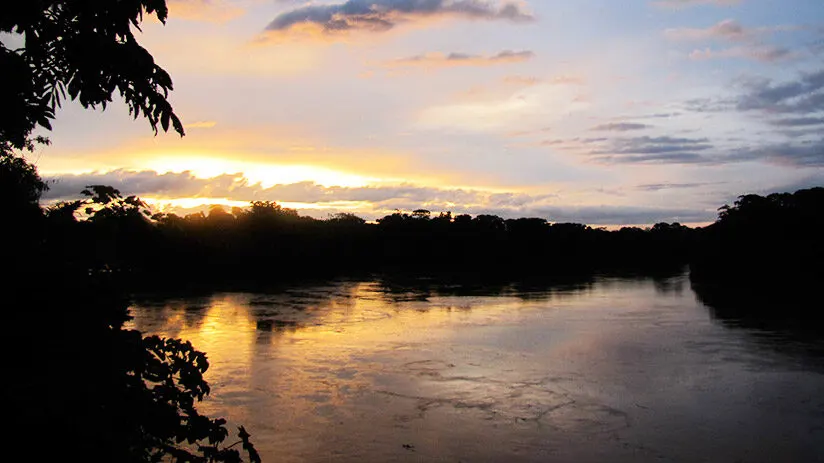
- You can also visit it if you are on a tour in Tambopata offered by the different lodges or in a group led by a professional guide.
- Another excellent recommendation is to get your ticket at the Puerto Maldonado National Protected Area Service if you travel alone. This is open Monday through Friday from 7:30 a.m. to 1:00 p.m. and reopens from 3:00 p.m. to 6:00 p.m. On Saturdays, it is open from 9:00 a.m. to 12:00 p.m. But as we said before, visiting Tambopata with an official and authorized travel agency is necessary. In this way, they buy your tickets, and you focus on the most important thing: enjoying yourself.
- You must also bring your passport with you at all moments.
“THE MOST DANGEROUS WORLDVIEW IS THE WORLDVIEW OF THOSE WHO HAVE NOT VIEWED THE WORLD”
As you can see, this majestic reserve within the Amazon is a fascinating place to explore. You will find an endless variety of birds to contemplate and photograph. And inside the Tambopata National Reserve, you can enjoy a magical moment with exotic species. We hope, together with the Machu Travel Peru team, to have been helpful. If you want to know more about our tours through Amazon, you can consult with our advisers. Rest assured that our goal is to help you fulfill the trip of your dreams. We will be looking forward to your visit to Peru!
